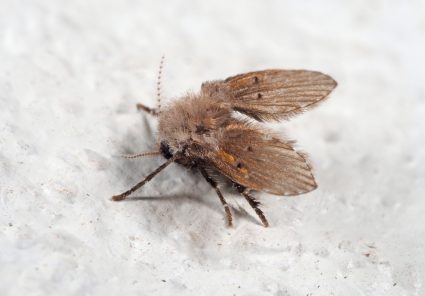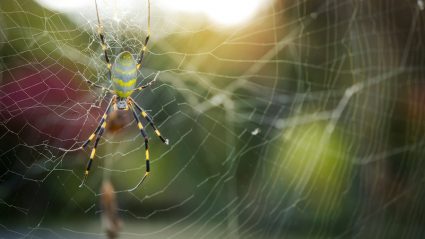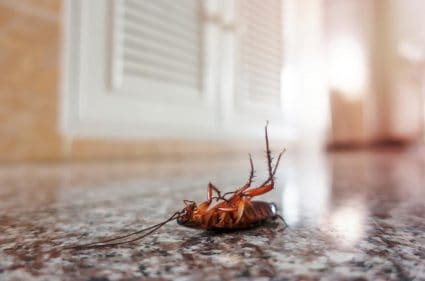
Clover mites, scientifically known as Bryobia praetiosa, are tiny, oval-shaped arachnids that can be a nuisance due to their sheer numbers, especially when they invade homes during certain seasons. A common question concerning these creatures is, “Does rain kill clover mites?” The answer is not as straightforward as one might think. Let’s dive into the details.
Rain does not directly kill clover mites. However, it can create an unfavorable outdoor environment, causing them to seek shelter indoors. This shift in habitat could indirectly lead to their demise. So, while rain isn’t fatal to clover mites, it significantly influences their behavior and survival.
Understanding Clover Mites
Clover mites are reddish-brown arachnids that measure between 0.75–0.85 mm in length. They feed on a wide range of plants, including lawn grasses, ornamental flowers, clover, dandelion, shepherd’s purse, strawberry, daffodil, Salvia, Alyssum, and primrose, among others. They are especially abundant in well-fertilized lawns, which provide a heavy growth of succulent grass.
Clover mites are found nearly worldwide, living on every continent except Antarctica. They prefer areas with full sun and are often found on the sunny southern and eastern exposures of homes.
Rain and Clover Mites: The Connection
Contrary to popular belief, rain doesn’t directly kill clover mites. However, it can create an unfavorable environment that influences their behavior and habitat preferences. Heavy rain, excessive heat, or sudden changes in temperature can trigger clover mites to seek indoor shelter.
Rain can stimulate clover mites to enter buildings in massive numbers, often becoming pests indoors. They usually invade structures during the first warm, sunny days of spring after rain showers and may infest structures again in autumn.
Survival Conditions for Clover Mites
Clover mites thrive in moderate temperatures, generally during spring and fall. They struggle to survive in extreme hot or cold temperatures. Access to plant food sources, moisture, and shelter are other crucial factors for their survival.
Well-fertilized lawns are particularly conducive to clover mite survival as they provide an abundant food source. Clover mites seek sheltered, dark, cool, and moist places to lay eggs and molt. They often crawl into cracks and crevices around foundations, window frames, and under the loose bark of trees.
Other Factors Affecting Clover Mites
Apart from rain and temperature, other natural factors can significantly impact clover mite survival. These include:
- Plant Availability – Clover mites feed on plant juices, obtaining nutrients by sucking them from plants like clovers, lawn grasses, and certain ornamental shrubs and trees.
- Soil Nutrient Levels and Plant Vigor – The soil nutrient level or plant vigor, as well as the proximity of the lawn to the house, can govern the incidence of infestation.
- Temperature Range – Clover mites are most active at temperatures between 45 and 65 degrees Fahrenheit.
Conclusion
While rain does not directly kill clover mites, it does influence their movement and behavior. It can create an unfavorable outdoor environment, prompting them to seek shelter indoors. Therefore, while it’s not the rain that’s deadly to these mites, it can indirectly lead to their demise by driving them into unsuitable habitats. Understanding these factors can help in effectively managing and controlling clover mite populations.
Frequently Asked Questions
How can I prevent clover mites from invading my home?
To prevent clover mite invasions, you can maintain a plant-free zone of about 18 to 24 inches around the foundation of your home. This creates a barrier that the mites are reluctant to cross. Sealing cracks and crevices around windows, doors, and foundations can also help keep them out.
Are clover mites harmful to humans or pets?
Clover mites are not harmful to humans or pets. They do not bite or cause diseases. However, when crushed, they can leave a red stain due to their body pigments, which can be a nuisance.
What are some effective methods to eliminate clover mites?
Non-chemical methods, such as vacuuming up the mites and promptly disposing of the vacuum bag, can be effective. For larger infestations, you may need to use a pesticide specifically labeled for clover mites. It’s always advisable to consult with a pest control professional for safe and effective treatment options.
Do clover mites cause damage to plants?
Clover mites feed on the juices of over 200 different plant species, including lawn grasses and ornamental plants. While they can cause some cosmetic damage, such as stippling on plant leaves, they are generally not a serious threat to the health of plants.










